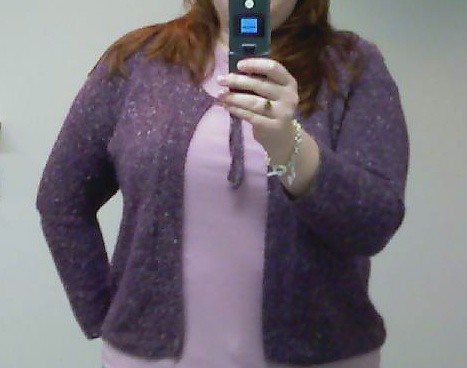The knitting went ‘round and ‘round. I’m not entirely sure why one of the smallest elements of the sweater seemed to take the longest.
Now that the striped garter stitch edging is cast off, I must admit that I am very glad I decided to knit it on rather than sew it on as called for in the pattern. By picking up and knitting the stitches I was able to switch directions at the collar turning, which allows the striping to be right-side out on the collar as well as the body of the sweater. It also saved me from going loony trying to sew the edging on, trying to make the corners match up correctly with the corners of the sweater. I am quite proud of how my corners turned out; they’re nice and corner-y, gently rounded rather than wonky, which is how I was afraid they’d turn out.
Sewing on the sleeves went pretty much the same way the whole sweater has. The armseye seemed to be a little bit bigger than the sleeve cap, so I knew the easing in of the set-in sleeve would involve a lot of easing. Thankfully, there were a couple of points that needed to match up, which made figuring out how much sleeve there was compared to armseye easier. I had to redo the seaming on the first half of the first sleeve 3 times. In the end, I determined that a 1 sleeve stitch to 2 armseye rows until reaching the armseye decreases would be what was going to work rather than doing the standard 3 sleeve stitches to 4 armseye rows ratio. This made the second sleeve go much faster. The underarm seam seemed easy-peasy in comparison.






